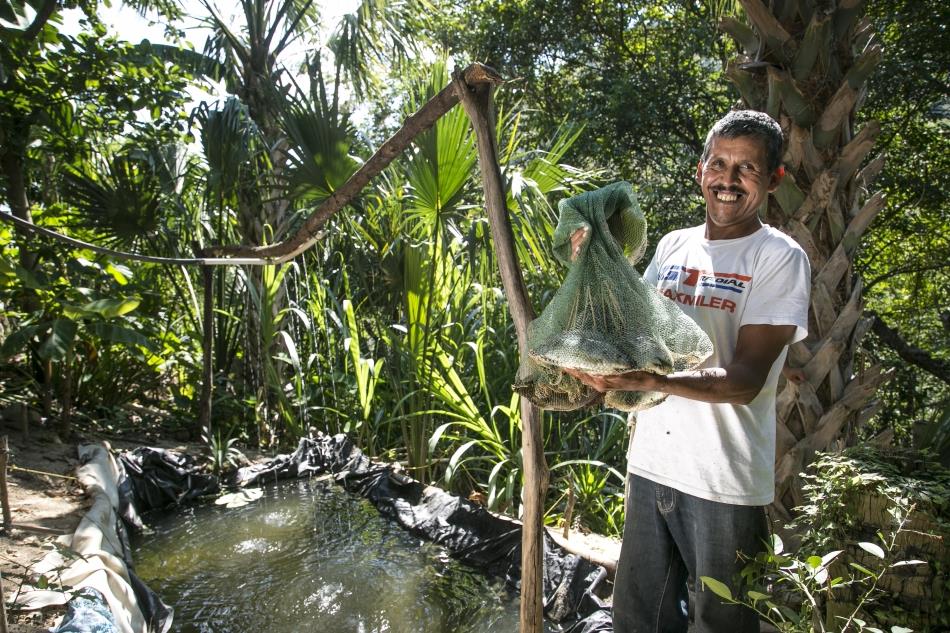No boats needed for a Guatemalan fishing community
Thanks to a grant from the Swedish government, an ingenious FAO project, done in conjunction with Guatemala’s agriculture ministry, changed everything.

Home-grown fish is now a regular part of the meal in Chiquimula’s households. ©FAO/Carlos Zaparolli
Imagine living in one of the driest areas on the planet. What little rain there is falls over the space of a few months, yielding around 700 mm in total each year. A population of 1.2 million has to survive on 65 percent less water than the rest of their compatriots, on a traditional staple diet of corn and beans.
But what a difference a rainwater harvesting system makes. Now the villagers of this arid eastern part of Guatemala are able to cultivate fish and snails to eat and sell in local markets, and have not only increased the yield of their annual harvest, but also have branched out into growing more vegetables than they were previously able.
Before 2016, the municipality of Chiquimula in Guatemala’s Corridor Seco had no local water supply: the nearest came from a spring on a mountain several miles away from the villages. The local farmers were suffering an average of three harvest fails in every five years. And with an average income of less than US$2 per day, the community did not have the money to put in an irrigation system in place.
Thanks to a grant from the Swedish government, an ingenious FAO project, done in conjunction with Guatemala’s agriculture ministry, changed everything. The idea was simple: create reservoirs in which to capture what little rainfall there was during the months of May to July and September to October and keep it from evaporating. This is not an easy task when temperatures in summer can reach 42 ºC.
